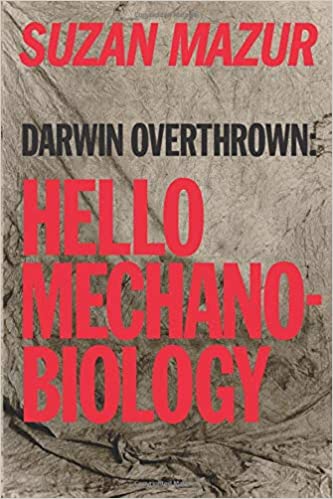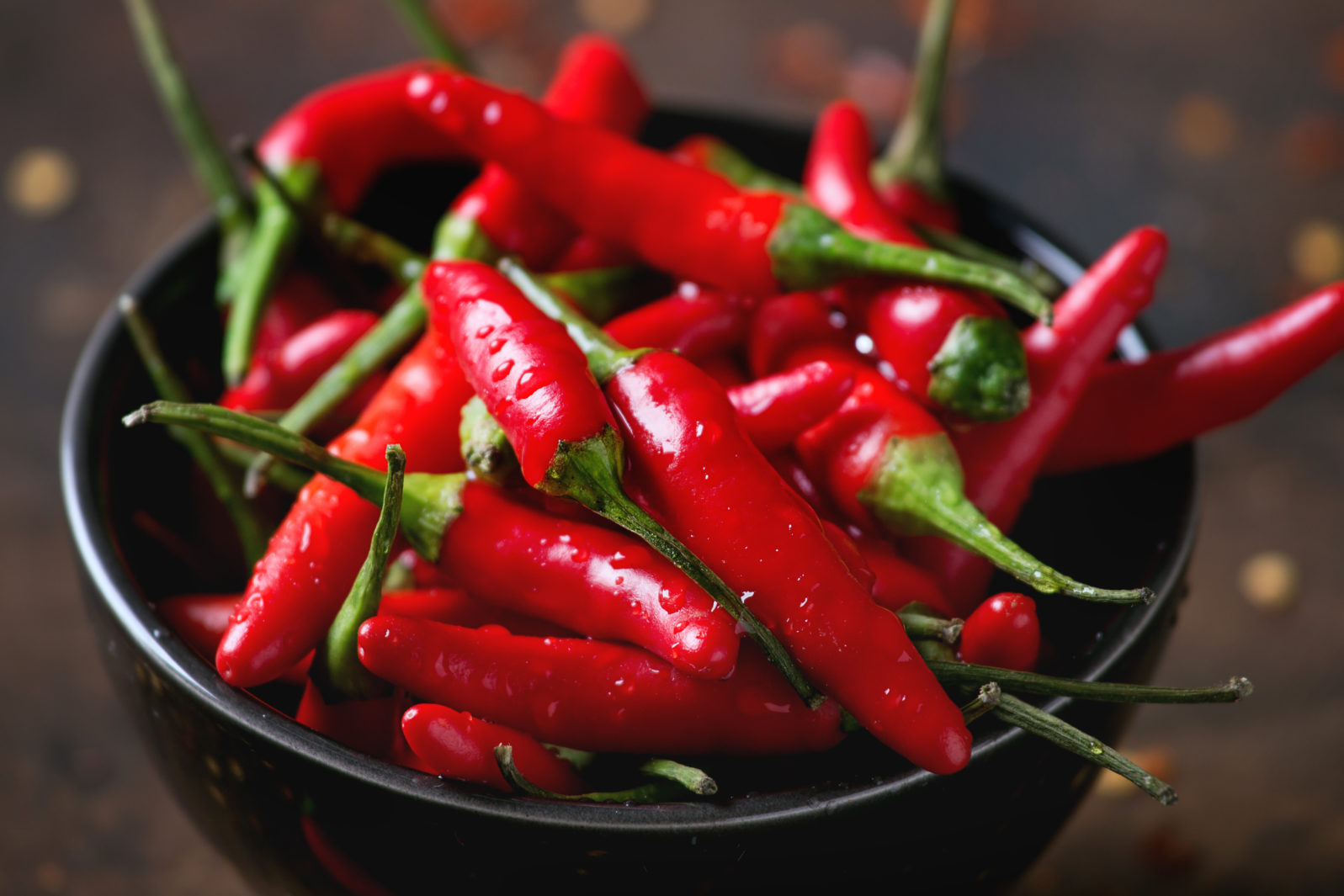Nobel Prize Medicine Win Solves a Mystery in Hot, Cold Sensing
Researchers discovered the exact path by which chili peppers feel “hot” and mints feel “cold” when the signals reach our brains.The 2021 Nobel Prize for Physiology or Medicine was awarded to David Julius of the University of California, San Francisco, and Ardem Patapoutian of Scripps Research in La Jolla, California, for “for their discoveries of receptors for temperature and touch.”
It’s been a longstanding mystery why chili peppers feel hot to the taste:
In order to truly appreciate Dr. Julius’ discovery, a bit of context may be in order. Unless you build up tolerance, eating spicy foods is painful. Peppers and wasabi give off a strange sensation that your mouth is on fire, and for the longest time researchers simply couldn’t figure out why this was the case. Failing to pinpoint any immediate benefits of this response, they speculated it must be the remnant of some distant evolutionary adaptation.
Dr. Julius answered this question by showing us what TRPV1 is responsible for: keeping our bodies safe from high temperatures. The channel responds not only to capsaicin, but also to temperatures that are greater than 110 degrees Fahrenheit. TRPV1 also acts up when we are injured or sunburned, causing damaged tissue to feel hot to the touch. In all cases, the channel transmits a signal that our brains turn into the sensation of heat.
Tim Brinkhof, “Beyond pain and pressure: 2021 Nobel Prize for medicine awards work on sensory perception” at Big Think (October 7, 2021)
To track the system at work, researchers needed to catch it responding to a false heat signal created by the receptor for capsaicin, the substance that makes the chili peppers taste painfully hot.
The receptor is an ion channel (a protein) called TRPV1: It “opens when heat is sensed: ”
Julius got the idea to do his capsaicin experiments while shopping in a grocery store: “Walking through the supermarket aisle one day, seeing all these hot chili pepper sauces, et cetera, I was thinking, ‘We really have to get this project done,” he said in a press conference on Monday. “And my wife said, ‘Well, then you should get on it!’”
Tanya Lewis, “2021 Nobel Prize in Physiology or Medicine Awarded for Discoveries in Sensing Temperature and Touch” at Scientific American (October 4, 2021)
 Image Credit: Brent Hofacker -
Image Credit: Brent Hofacker - The mystery they resolved is one of those “how, exactly?” problems, frequent in science. To use a system to our advantage, we must know how it works exactly, not just generally:
“Our ability to sense heat, cold and touch is essential for survival and underpins our interaction with the world around us,” said the Nobel Assembly at the Karolinska Institutet. “Prior to the discoveries of David Julius and Ardem Patapoutian, our understanding of how the nervous system senses and interprets our environment still contained a fundamental unsolved question: how are temperature and mechanical stimuli converted into electrical impulses in the nervous system?”
Corryn Wetzel, “Scientists Studied Spicy Chili Peppers and Cool Menthol for Their Nobel Prize–Winning Research on Heat and Touch” at Smithsonian Magazine (October 4, 2021)
Meanwhile Papoutian and his team, along with Julius, discovered the process by which cold signals get translated as information in the brain by studying the receptors for menthol (as in peppermints, which are perceived as “cold”:
Molecular biologist Patapoutian and his team at Scripps Research in La Jolla, California, poked individual cells with a micropipette and observed their electric signals. Using this prodding technique, Patapoutian was able to identify the cellular mechanism and underlying gene that translates a mechanical force, like pressure on our skin, into an electrical signal in our nervous system. Working independently of each other, Julius and Patapoutian also used menthol to discover a receptor for sensing cold.
Corryn Wetzel, “Scientists Studied Spicy Chili Peppers and Cool Menthol for Their Nobel Prize–Winning Research on Heat and Touch” at Smithsonian Magazine (October 4, 2021)
Plus, Patapoutian and colleagues identified Piezo1 and Piezo2, genes for proteins that sense touch and, in the case of Piezo2, help tell us where our limbs are at any given time (proprioception).
Now, what about chronic pain? In an interview with Scientific American in 2019, Julius explained how his research into capsaicin (as in chili peppers) might help shed light on sources of chronic pain. Normally, pain serves a protective function:
When you sprain your ankle, you need to know that you’ve done something bad so that you can protect it and allow it to heal. People who lack that ability—for example, people who have [a common complication of] diabetes or people who have leprosy [Hansen’s disease]—they don’t have sensation in their extremities. If they injure themselves, if they have an ulcerating sore in their foot and don’t know it, they don’t know to protect themselves, and so it becomes infected. So that whole enhancement to pain sensitivity, in its best form, is there to protect us and tell us that we have to guard the site. Of course, the problem is that sometimes it gets out of control. And then we have a persistent or chronic pain syndrome.
Tanya Lewis, “What Chili Peppers Can Teach Us about Pain” at Scientific American (September 6, 2019)
In short, the pain is real but its cause is an out-of-control receptor rather than illness or injury. Identifying the culprit precisely is essential for a targeted approach to the problem. Another hope for the new research is a targeted approach to non-opioid pain relief, a field where past research results have been disappointing.

This area of research is sometimes referred to as mechanobiology (“where biology and physics meet”). In light of the 2021 Nobel win, science writer Suzan Mazur has republished a 2018 interview with University of Michigan mechanobiologist Allen Liu on the mammalian ion channels Piezo1 and Piezo2 at her blog, Oscillations. He begins by explaining the mechanome, “the set of proteins or molecular entities that sense or respond to forces”:
[Liu:] If you think about all the proteins that sense or respond to forces, one can argue that in principle all proteins are sensitive to forces. This is because proteins are folded into 3-dimensional structures by non-covalent interactions. And if you apply a force by grabbing onto a single molecule and extend it, the protein will unfold. So by their nature, all proteins are sensitive to forces.
The key thing the field is trying to understand now is that if a force is applied, how does it change the energy landscape of the molecular interactions. How does that force facilitate binding or unbinding to other molecular entities? We still don’t know which proteins have cryptic sites that open upon physiological force applications. To a certain extent, we have not identified all the key molecular players in force transduction.
We learned only about eight years ago [in 2010], for example, of the existence of mammalian ion channels that are mechanically activated and are involved in touch and pain sensation. They are called Piezo1 and Piezo2.
Suzan Mazur, “ENCORE: Allen Liu on the Mechanome and Synthetic Cell Development” at Oscillations (November 6, 2018/October 7, 2021)
So researchers must take into account physics, as well as chemistry and biology, in order to address some problems with pain.
Mazur is also the author of Darwin Overthrown: Hello Mechanobiology, an introduction to the topic in the form of interviews with researchers.
